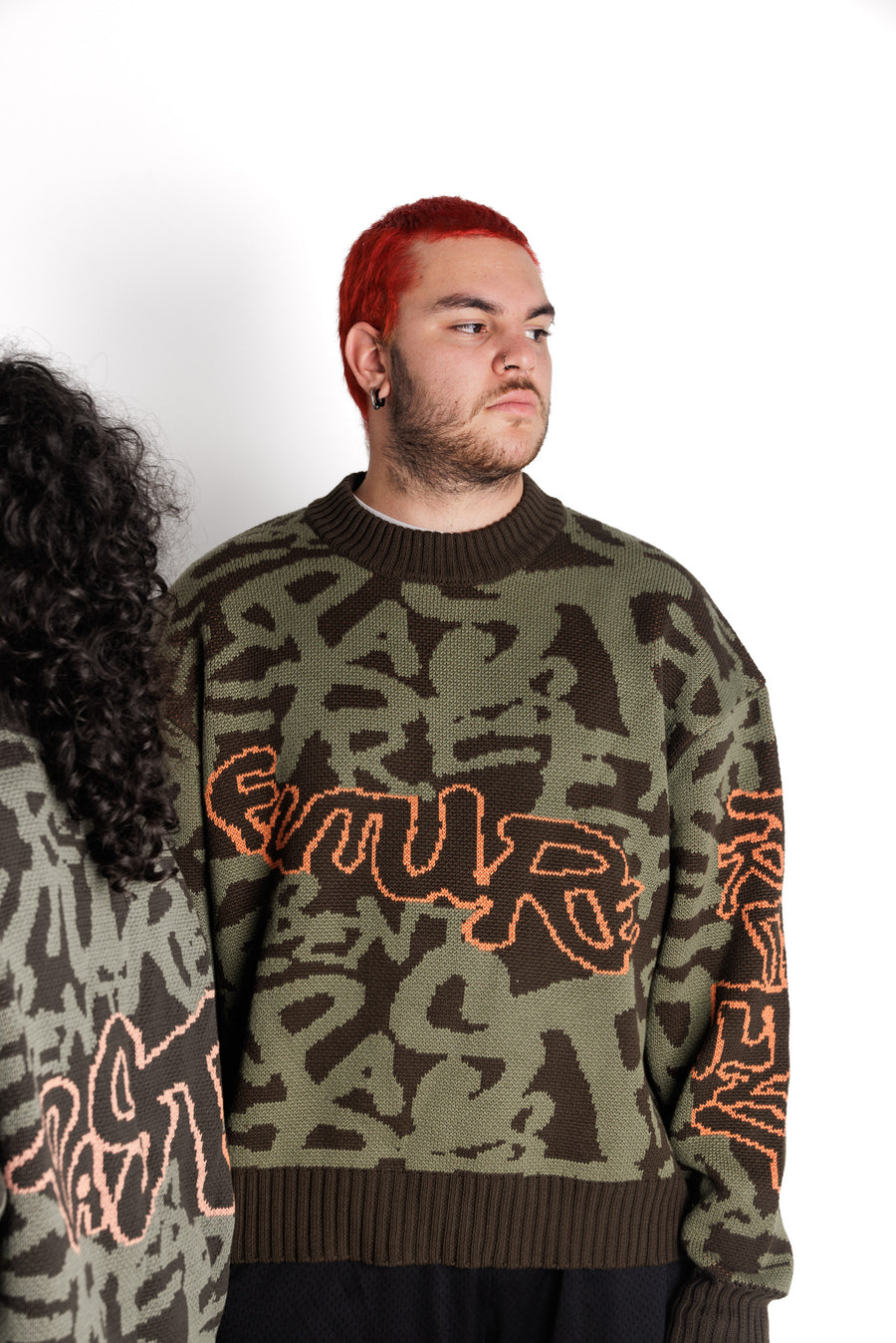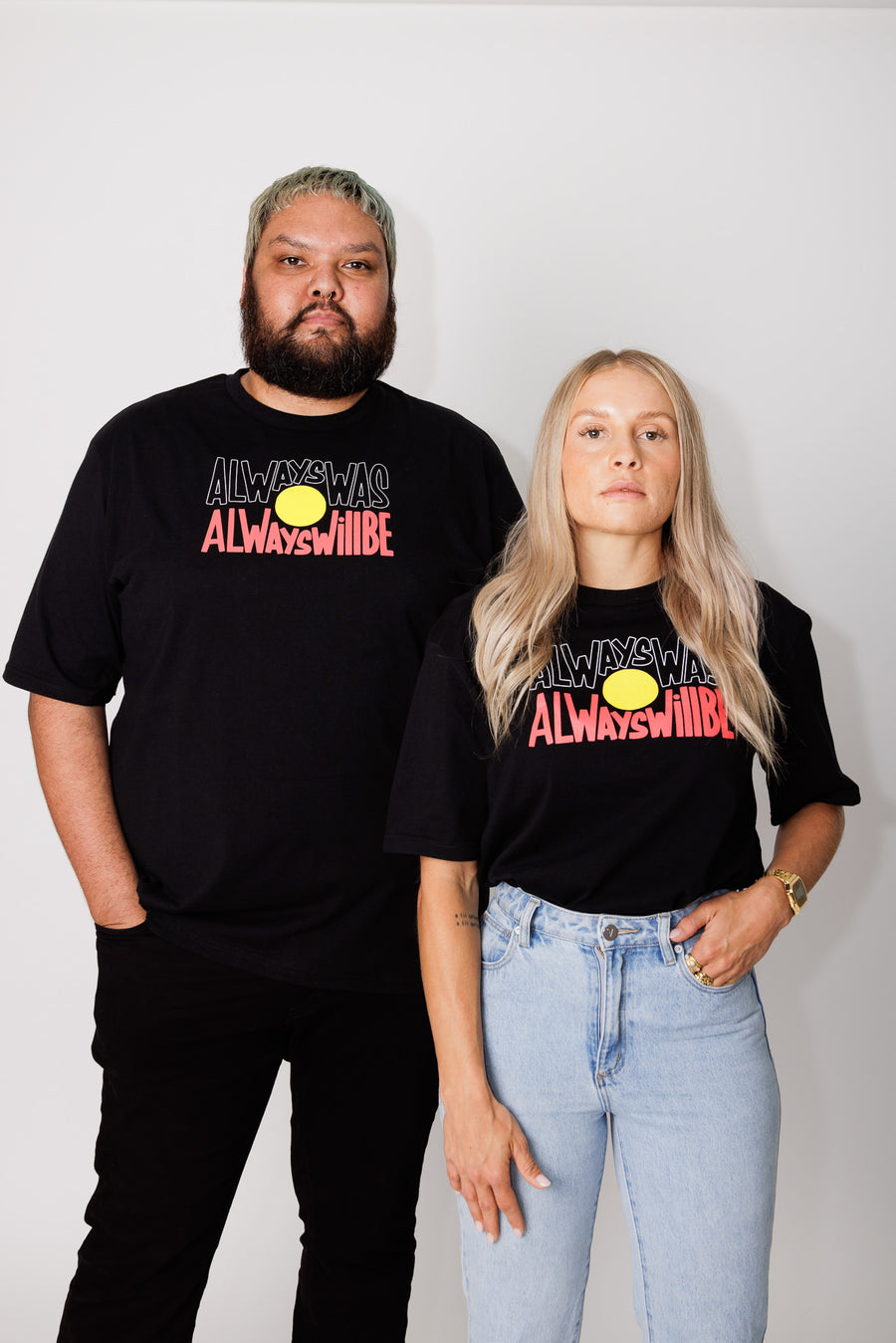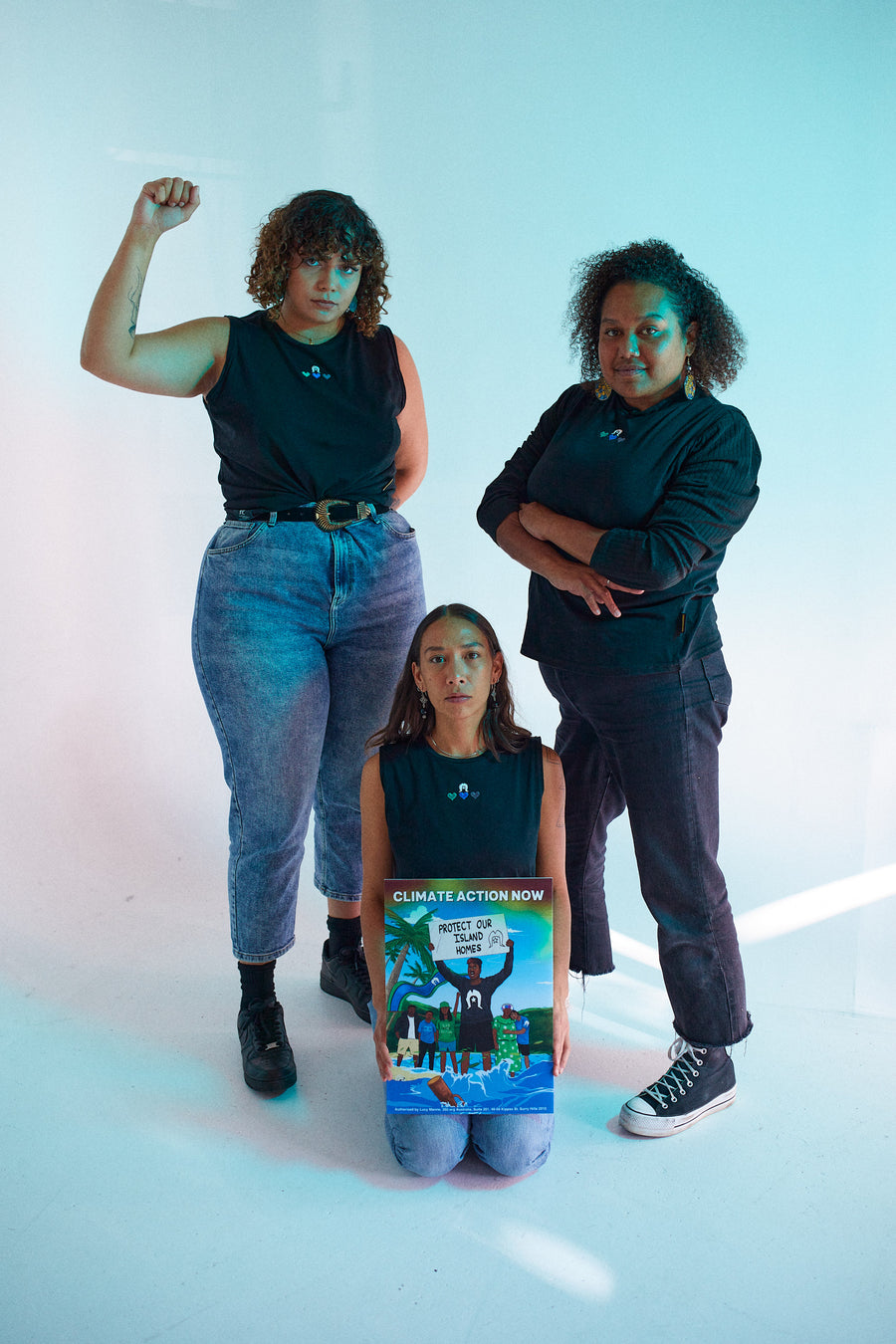How to Free the Flag - A lawyer's expert opinion on resolution

Summary of issues related to the compulsory acquisition of the copyright and licences related to the Aboriginal Flag
Prepared by Peter Francis | Partner FAL Lawyers
FAL Lawyers’ been working alongside Clothing The Gap, providing Intellectual Property and Trade Mark advice and assistance throughout the Free The Flag campaign.
Introduction
The copyright and licences related to the Aboriginal Flag have recently become the focus of national attention with more and more Australians realising for the first time that even though the Flag was officially recognized as a flag of Australia in 1995 it is mired in a copyright and licensing controversy which is eroding its legitimacy and causing great distress through Indigenous and wider communities.
Set out below is a series of questions and answers that detail the issue and a proposed solution for resolution.
Why is the Flag not ‘free’?
Even though the Flag is an official flag of Australia, the Flag is a copyright work. This copyright belongs to an individual, not a national representative body as is the case with the Torres Strait Islander Flag.
The Flag’s copyright is owned by Harold Thomas, an Aboriginal artist and activist descended from the Luritja people of Central Australia. The copyright of the flag was established in 1997, two years after the flag was proclaimed, when the Federal court officially recognised Mr. Thomas as the creator of the flag when his authorship was challenged by George Brown. This means that the Flag is protected by both the Flags Act 1953 and Copyright Act 1968. The Flag can only be reproduced in accordance with copyright law and Harold’s permission.
Harold Thomas has granted three licences over the Flag’s copyright in return for commercial gain.
One of those licensees, WAM Clothing claims to hold a worldwide exclusive license to use the Aboriginal Flag on clothing and digital and physical media.
WAM Clothing has issued many cease and desist letters to a number of Aboriginal owned businesses and Aboriginal Community organisations, effectively shutting down their use of the Flag unless they come to a commercial arrangement with WAM Clothing for that use.
It is also WAM Clothing which is at the centre of the controversy that has resulted in the AFL not using the Aboriginal Flag to celebrate the 2020 Sir Doug Nicholls (Indigenous) round.
Many people find it unacceptable that the effective custodianship of the Aboriginal Flag is in the hands of a corporation which not only is a non-Indigenous business but part-owned and managed by an individual, named Ben Wooster.
Ben Wooster was the principal of another company which in 2015 was found by the Australian Competition and Consumer Commission (ACCC) to have sold Indonesian made products falsely passed off as hand painted crafts by Australian Aboriginal persons.
This behavior was found by the ACCC to have the potential to “undermine the integrity and value of Indigenous Australian art” and negatively impact on Indigenous Australian Artists.
Harold Thomas granted a second exclusive licence to another Ben Wooster controlled company, Gifts Mate, which has a worldwide exclusive licence to reproduce the Flag on souvenirs and a vast array of products.
As things stands, a large majority of access to the use of the Flag is controlled by a group which includes an individual who ran a company with a history of potentially undermining and negatively impacting Aboriginal culture.
In addition to those licences held by Ben Wooster related companies, the third and longest standing licence is with a separate company, Flag World (formally Carroll and Richardson) who have the exclusive right to produce the Harold Thomas work on flags.
Apart from copyright are there any other controls on the Aboriginal Flag?
Yes. The Flag is subject to rules made under the Flags Act.
Can anything be done about this?
For the current situation to be resolved, the following three options are among those available:
- Litigation
Anyone with legitimate interest in using the Flag can seek a declaration from an appropriate court on the legal issues surrounding the Flag.
Seeking a declaration is not suing anyone, although the declaration, depending on what it says, could have far reaching implications on the Flag’s copyright and the licences granted under it.
- Government buying existing copyright
If Harold Thomas agreed, the Government could buy the copyright for the Aboriginal Flag and it would sit protected under the Flags Act. Harold Thomas, as the copyright holder and the current licence holders, would be fairly compensated in this purchasing agreement.
- Compulsory acquisition from Government
Compulsory acquisition forcefully takes the copyright away from Harold Thomas along with the three current licensing agreement holders. The copyright of the Flag will then sit with the Government and would be protected under the Flags Act.
Common questions raised in regard to the above avenues:
- What would the litigation be about?
The litigation would explore a number of legal issues surrounding the Flag.
The first is the issue of an implied licence.
Aboriginal people have adopted this symbol and given it value. The Aboriginal Community have used this Flag as their flag for 49 years.
The history of the Flag’s creation indicates clearly that it was created in 1971, as a symbol of Aboriginal culture and as part of a movement to unite, recognise and better secure the fundamental human rights of Indigenous Australians.
In this respect, the Flag did not begin life as a “piece of art”. Rather, Harold Thomas created the Flag as an activist and part of that movement just described in which the Flag was first flown in Adelaide Square in July 1971.
The Free the Flag movement maintains that all Australians have an implied licence to use the Harold Thomas artwork as their Flag and do not need anyone else’s permission whether be WAM, Gifts Mate or Flag World to recreate, make or otherwise use the Aboriginal Flag as a symbol of Aboriginal culture and heritage.
Another issue to be explored is whether, once the Flag was formally adopted as a flag of Australia, the power of the Governor General to authorize people to use the Flag, ‘trumps’ the power of Harold Thomas and his licensees to stop people from using the Flag or to control the ways in which they do so.
- How would the existence of this implied licence or the Flags Act issue be proved in a Court?
The Free the Flag movement has substantial pro bono support from copyright lawyers who would be prepared to run the case.
- Is litigation the only option?
No, litigation is not the only option. Litigation is expensive, complex, uncertain and it only produces winners and losers.
The Free the Flag movement does not wish to go down this course, but it will if necessary and it’s possible the court would produce an outcome in line with the Campaign’s aim to Free the Flag.
If this happened, Harold Thomas would effectively lose everything and so would his licensees.
- What about compulsory acquisition? What does that involve?
Under the Australian Constitution, the Commonwealth Government has power to acquire private property of Australian citizens. That includes copyright and licences granted under a copyright.
It is therefore possible for the private controls over the Flag that are currently being used to be removed for public benefit.
- Isn’t that unfair? What about Harold Thomas and the licensees?
If the Government acquires the copyright, under the powers of the constitution it must pay fair compensation.
Equally if the Government acquires the licences granted to WAM Clothing, Gifts Mate and Flag World it must pay fair compensation.
The amount of compensation will either be agreed by the Government, Harold Thomas and Harold Thomas’ licensees, or worked out by experts and based on the historic revenues generated by the Flag’s copyright and its likely future revenues. Under copyright law, Harold Thomas’ copyright exists for 70 years post his passing.
It is relevant in this instance to point out that the value of the Harold Thomas artwork has been created through the Flag’s adoption by Australia’s Aboriginal peoples and the wider Australian community.
If that hadn’t happened, the image of the Flag would simply be a painting hanging on a wall somewhere.
In June 2019, the Honourable Ken Wyatt AM MP ruled out the Australian Government acquiring the Flag, noting that Harold Thomas’ “shared his and his family’s deep concern to protect the integrity of the flag for all Australians, and reiterated his creative rights to his artwork”.[1]
However, the Flag’s integrity is already under threat for the reasons just described.
Further, as the Flag’s creator, Harold Thomas has moral rights over the Flag which would survive compulsory acquisition.
Harold Thomas’s moral rights include:
- The right to be recognised as the Flag’s creator; and
- The right to prevent any derogatory treatment of the Flag.
In addition, similar protections over the integrity of the Flag are set out in the Flags Act.
- What’s the best way to go?
The short answer is compulsory acquisition. It’s the quickest, the most certain and fairest way to proceed.
Time is a factor here. With every day that the controversies around the Flag continue, the integrity of the Flag and the fundamental human rights of Indigenous Australians and Australians generally are eroded.
No other people on earth are suffering these indignities.
As mentioned above, litigation takes time, costs a lot of money and can only produce losers and winners. A successful litigation campaign to free the Flag could seriously undermine the financial security of Harold Thomas and that is not the intent of the Free the Flag campaign.
Compulsory acquisition requires fair compensation to be paid to all parties, not just Harold Thomas but all of his licensees.
Compulsory acquisition would, at the same time, preserve the right of Harold Thomas to be recognised as the creator of the Flag and to prevent any disparaging use of the Flag.
With compulsory acquisition, the Aboriginal Flag is placed on the same footing as other official flags of Australia and the right of use and enjoyment will be restored to all Australians.
Prepared by
Peter Francis
Partner
FAL Lawyers
27 August 2020
[1] Department of the Prime Minister and Cabinet, “Protecting the Integrity of the Aboriginal Flag” (20 June 2019).






As a life long activist for my peoples, it strikes me as odd that a flag of protest AGAINST the tyranny of the successive federal governments since Federation, is being recommended by a clothing group to give to that same government for safekeeping. So now we ask the government to hand us our PROTEST flag, like we ask them for permits to masrch for Survival Day and NAIDOC Week. Wow
https://clothingthegap.com.au/pages/aboriginal-flag-timeline
Time for each First Nation and Clans to do their own Flags and cultural designs.
Time for each First Nation and Clans to do their own Flags and cultural designs.
Thank you for this explanation. I am wondering if the identity of the original designer can still be challenged. I was not asked to be a witness at the court hearing when David George Brown contested the designer. I have known and witnessed David George Brown design, the meaning of the colours and the payment of winning the competition. I am aware that this is not the forum to raise this, however I need to start somewhere
Regards
Sharon Gollan
Leave a comment